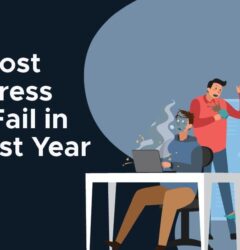11 May

Content strategy and content planning must work in tandem. Without one or the other, your content marketing is futile. However, many entrepreneurs and marketers think they’re the same. Although both these steps work towards the same goal, these terms have nuances. And in this article, we’ll focus more on content planning, their differences, and how to create a content marketing plan built for success.
What is Content Planning v.s. Content Strategy?
In a nutshell, your content strategy is the blueprint of your content marketing plan. It’s the first step that content marketers need to take to ensure that the materialization will go as planned.
This is where marketers think of various methods and techniques to make your content marketing successful. Brainstorming for ideas, setting goals, and jotting everything down happen in this stage. Without a robust content strategy, you’ll get sidetracked when publishing and distributing content.
Content strategy is a pre-requisite of your content plan. The difference between content strategy and content planning is that the former is the guide and the latter is the initial operation. Content planning turns all your vision in your content strategy into a reality. In a nutshell, content planning is the process that comes after content strategy. And this is when the content materialization happens.
Here’s a five-step process on what goes into content marketing:
- Content strategy
- Content planning
- Production
- Publishing
- Distribution
Why is Content Planning Important?

Without content planning, you’ll never be able to produce, publish, and distribute content. Also, curating your content ensures that you attract more prospects. In this day and age, merely distributing content won’t suffice.
Every distributed content should be tailored to a clearly defined target audience. This is the only way your content can help you with your goals. Whether you’re trying to acquire more leads, increase website traffic, or improve conversions, content planning will enable you to do so.
Here are four reasons why content planning is essential:
Understanding the purpose
If you’re merely publishing content for the sake of content marketing, then don’t expect it to make the rounds online. Content planning will enable you to understand each content’s purpose. Understanding why you’re publishing this type of content in the first place allows you to cater to your audience better.
Improves targeting
Content planning allows you to narrow down your audience. Relevance and value are incredibly crucial in content marketing. Giving your target audience informative content that helps resolve their pain points is the holy grail of content marketing. And when you continue to define your audience and adjust your content, this improves your targeting. With better targeting, rest assured your readers will likely take the next call to action.
Branding consistency
It’s recommended to always keep your content updated. Repeating the same content over and over again will make your content marketing stagnant. During content planning, you think of content ideas that can put your brand in the best light. That being said, regularly planning your content ensures you stay on-brand while giving your audience content variety.
Improves SEO
SEO and content marketing should work alongside each other. By optimizing your content, each piece will have a chance to rank on search engines. But SEO also needs a robust strategy to increase your content’s ranking. You’ll have to carefully select the right keywords and integrate best SEO practices to make your content rank. And all these happen during content planning.
What to Consider When Planning Content
Before planning content, consider these factors to make for a successful content marketing strategy:
SEO
As mentioned, your content must be SEO-friendly, and there is no other way around that. The only way for content to rank is to optimize it with the proper and relevant keywords that cater to user intent. Ensure that you have an excellent SEO strategy that you can apply to all your content pieces.
Competitors
Stalking the competition is part of content planning. It’s always better to see what your competition is doing so you’ll know how to outperform them. Also, there is no shortage of useful tools that let you crawl through their website. This way, you’ll know what their high-ranking keywords are and create better content around those keywords.
Website audit
If you already have an existing blog on your website, it’s time to do a content audit before content planning. This will help you weigh where your content is currently. Plus, doing a website audit allows you to gauge which content sits well with your audience and which ones to nip in the bud. This way, you won’t waste time creating content with no impact on your audience.
Buyer persona
The most vital factor to consider before content planning is your buyer persona. Once you’ve clearly defined your audience, try to put yourself in their shoes. Consider yourself the buyer and determine what your pain points are. Creating a buyer persona will help you personalize your content and improve its impact.
How to Plan Your Content

Now that you know the essentials, here’s a five-step guide on how to plan your content:
1. Determine your goals
Determine your goals so you can tailor your content around those goals. Content writers and copywriters know the techniques on how to make content more impactful. Are you improving brand awareness? Then write about your brand’s story or your team’s journey. Do you want to increase website traffic? Then ensure you include links to your site on your content. Are you looking into generating more leads? Then write a copy that converts by including compelling calls to action.
2. Find your readers
After you brainstorm for content ideas, publishing and distribution come next. However, when you’re distributing in the wrong channels, no one will take notice of your content. Know where your target readers are lurking and go from there.
3. Gather content ideas
Generating content ideas is the key to a fruitful content marketing plan. The more ideas you gather, the better. Sit with your team regularly and see if your content is still up to par with your audience’s needs. If you run out of content ideas, use tools such as Answer the Public or Moz Keyword Explorer.
4. Diversify content types
Content refers to anything published on search engines. There are many content formats marketers can take advantage of. Some are:
- How-to articles
- Listicles
- Case studies
- Ebooks
- FAQs
- Interviews
- Surveys
- Videos
Once you know what content types you want to start with, see what other content types your audience will like. Try to diversify or repurpose your cornerstone content as well.
5. Use a content calendar
Publishing content regularly allows for branding consistency and content marketing success. With the help of a content calendar, you won’t have a hard time keeping track of posting regular and relevant content.










